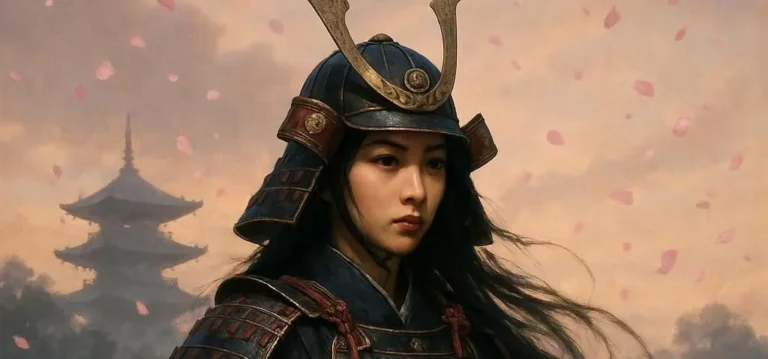505 views Conflicts That Shaped Samurai Warfare Tactics
The samurai, Japan’s legendary warrior class, left an indelible mark on the nation’s history. Renowned for their honor, discipline, and martial prowess, samurai warfare tactics were not only sophisticated but also deeply influenced by the conflicts they engaged in. Over centuries, various wars and battles shaped their strategies, weapons, and philosophies, transforming them into the iconic figures we know today. This blog post explores the key conflicts that defined samurai warfare tactics and how these historical events continue to captivate modern enthusiasts.
The Genpei War: The Dawn of Samurai Ascendancy
The Gempei War (1180–1185) marked a turning point in Japanese history, ending the dominance of the Imperial Court and establishing the Kamakura Shogunate under samurai rule. This conflict is significant for several reasons:
- Emergence of Samurai as Dominant Force: The war showcased the samurai’s growing influence, moving from being mere bodyguards to becoming the ruling class.
- Tactics and Strategy: Battles like the Battle of Dan-no-Ura demonstrated the use of naval tactics and coordinated assaults, highlighting the importance of strategy over brute force.
- Cultural Impact: Tales from the Gempei War, as recorded in The Tale of the Heike, romanticized the samurai, emphasizing loyalty and honor, which became central to their code of conduct.
This period laid the foundation for samurai dominance and the evolution of their tacticalapproaches.
The Mongol Invasions: A Defensive Revolution
In 1274 and 1281, the Mongols, under Kublai Khan, invaded Japan. Despite their vast resources and superior numbers, the samurai successfully repelled both invasions—thanks in part to the “Divine Wind” (Kamikaze), a typhoon that destroyed the Mongol fleets.
The Mongol invasions were pivotal for samurai tactics:
- Adaptation to New Threats: Samurai faced enemies with different tactics and technology, prompting changes in armor (lighter and more flexible) and the increased use of projectiles like arrows and fire.
- Fortification and Guerrilla Warfare: Samurai employed hit-and-run tactics and fortified defensive positions, showcasing their versatility beyond traditional pitched battles.
- National Unity: The invasions fostered a sense of unity among Japan’s warring clans, emphasizing the importance of defense against foreign threats.
These invasions were a catalyst for advancements in samurai defenses and strategies, highlighting their adaptability.
The Nanboku-chō Period: A Time of Civil War
Following the Mongol invasions, Japan descended into civil war during the Nanboku-chō period (1336–1392), as the Northern and Southern Courts vied for control. This era further refined samurai tactics:
- Light Infantry Tactics: The use of light armor allowed for rapid movement and ambushes, key in guerrilla warfare. Samurai began using naginata and daggers for close combat.
- Castles and Fortifications: The construction of mountain castles provided defensive strongholds, incorporating natural terrain into their strategies.
- Leadership and Loyalty: The period emphasized the importance of strong leadership and loyalty, as alliances often shifted and temporary truces were common.
This period showcased the samurai’s ability to adapt to changing circumstances and the complexity of their strategic thinking.
The Sengoku Period: The Age of Warring States
The Sengoku period (1467–1603) was marked by constant warfare, social upheaval, and political fragmentation. It was during this time that samurai tactics reached new heights in complexity and sophistication.
Key developments during this period include:
- Firearms and Innovation: The introduction of firearms (arquebuses) by Portuguese traders in 1543 revolutionized warfare. Samurai adapted by using rotating volleys of fire to maintain a steady offensive.
- Large-Scale Armies: Armies expanded in size, leading to more organized formations and the use of combined arms—cavalry, infantry, and archers.
- Intelligence and Deception: Spies, scouts, and ninja were used extensively for espionage and sabotage, highlighting the importance of information in warfare.
- Naval Warfare: Control of waterways became crucial, leading to advancements in naval tactics and the use of ships for transportation and battle.
The Sengoku period’s constant warfare fostered an environment of innovation and strategic evolution among the samurai.
The Boshin War: The End of an Era
The Boshin War (1868–1869), the civil war that marked the end of the samurai era, was a clash between the Tokugawa Shogunate and the Imperial forces seeking to modernize Japan. Samurai played a final, pivotal role in this conflict:
- Modernization and Decline: The war highlighted the decline of traditional samurai tactics in the face of modern technology, leading to their eventual dissolution.
- Final Stand: Despite being outgunned, samurai demonstrated their loyalty and honor, fighting valiantly in futile battles against modern forces.
- Legacy: The war symbolized the transition to modernity in Japan, ending the samurai era but cementing their legendary status in history.
This final conflict underscored the challenges of maintaining traditional warfare in a rapidly changing world.
Conclusion
The samurai’s enduring legacy is deeply rooted in the conflicts they engaged in, each shaping their tactics and ethos. From the Gempei War to the Boshin War, these conflicts not only defined the samurai but also laid the foundation for Japan’s military and cultural identity. Their strategies, honor, and discipline continue to captivate historians and enthusiasts, offering timeless lessons in leadership and adaptation.
In understanding these conflicts, we gain insight into the evolution of warfare and the spirit of the samurai, whose impact on history remains immeasurable.






